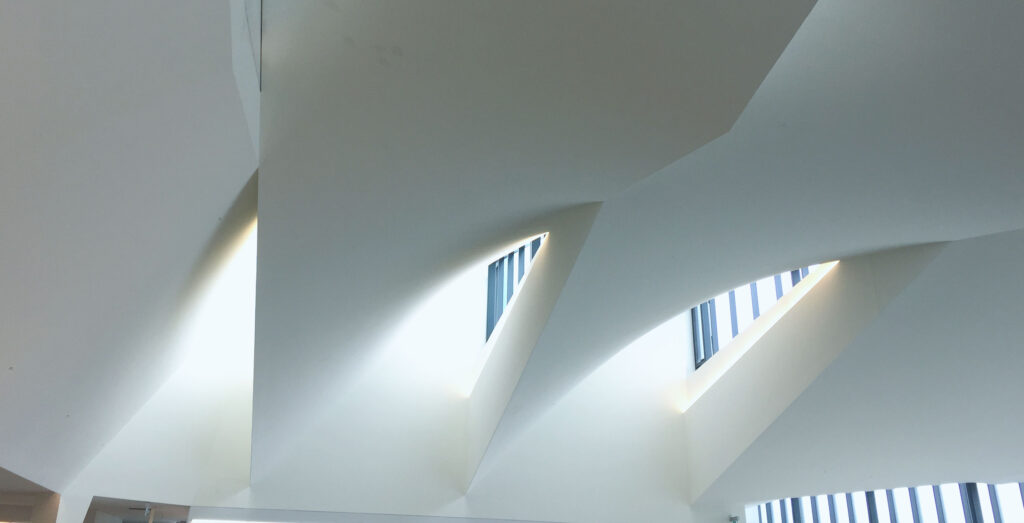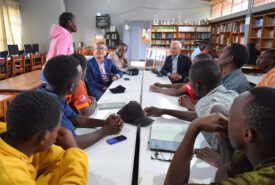Thank you, Sevaun, for that kind introduction. I would also like to thank you and CivicAction, and also Professor Paul Hess, Associate Chair and Director, Program in Planning, and the Department of Geography here at the University of Toronto, for co-hosting and co-sponsoring tonight’s forum.
Special greetings to: Professor Matti Siemiatycki, also of the Department, who will speak at the end of the proceedings, and to our moderator, Mary Wiens, producer of CBC Radio One’s Metro Morning.
And finally, a warm welcome to our panellists: Jesseca Dudun, Anglophone Communications Director, Young Greens of Canada, and a part-time student at Humber College; Michelle Johnston, President, Ontario Young Liberals, and an alumna of U of T; Alanna Newman, President, Ontario PC Youth Association, and a U of T student; and Laura Anonen, another of our alumnae, who is Central West Representative, Ontario New Democrat Youth. Ladies and gentlemen, thank you, all, for joining us.
I am so pleased to be here with you this evening. And I am delighted that this discussion is taking place here at the University of Toronto. As I said in my Installation Address five months ago, the University has a social obligation to collaborate with local partners in addressing the most compelling urban issues of the day.
Tonight’s gathering is a perfect example. We bring to it many viewpoints, but one goal – to unite in calling for decisive, evidence-based public investments in transportation infrastructure for the Greater Toronto Hamilton Area.
Speaking specifically of the Toronto region, due to decades of woefully inadequate expenditures, we have one of the worst commute times in North America – Metrolinx estimates it’s 82 minutes per day, on average, rivalling Los Angeles.
By 2031, the population in the region will increase from just over 6 million people today to 8.6 million, and more than a million more cars could be on our roadways.
But of the minimum investment Metrolinx says is needed to address the problem, only about one-third of the funding has been committed so far. We must take action, now, together. It is quite simply crucial to ensuring sustainable economic growth and a greater quality of life for all who live, work, and study in Canada’s leading metropolitan region.
Transportation infrastructure is also a factor in the continued success of the University of Toronto, not least as it affects the quality of the student experience on our three campuses. In this sense, our advocacy on the transportation front is a matter of ‘enlightened self-interest’!
According to the latest official data, 68 per cent of our first-year students and 94 per cent of our senior-year students live off-campus. A majority, in each case, live with their parents, relatives, or guardians. The key percentages here are significantly higher than at other Ontario universities, though I hazard to guess that other post-secondary institutions in the Toronto region are similar to us on this score.
The region’s appalling commute times make it much harder for students to engage in university life both inside and outside the classroom – the co-curricular and extra-curricular activities that are a key part of post-secondary education.
The success of great universities and that of the great urban regions in which they’re so often located, go hand-in-hand. World-class cities help their universities to attract outstanding students, faculty, and staff, and provide rich, unique learning opportunities for them. In turn, world-class universities contribute massively to the economic and social prosperity of their host regions.
So, we face the challenge of the Toronto region’s transportation deficit together as partners. Of course, given the long, torturous history of transit debates in Toronto – not to mention the current political gridlock, if you will pardon the pun – we might get discouraged.
In 1909, mayoral candidate Horatio C. Hocken ran on a pro-subway “platform”, if you’ll pardon another pun, with the rallying cry “Tubes for the People”. He was unsuccessful, in spite of the snappy slogan. A map of one of the earliest subway proposals in Toronto’s history, from the Jacobs & Davies Report, in 1910, includes a route that looks a bit like the Downtown Relief Line we’re still pondering, 100 years later!
The subway debate continued for a few years, and then fell silent for a couple of decades. But, as we all know, in 1954 Toronto’s train came in.
And there have been many other milestones, including the establishment of the GO Transit system, in 1967, and, for all its problems, the Scarborough RT, in 1985.
Of course, occasionally we made progress by what was not done; and in this, 1971 was a high point, when the province cancelled a proposed Spadina expressway.
As Premier Bill Davis famously said at the time, and I quote:
“If we are building a transportation system to serve the automobile, the Spadina Expressway would be a good place to start. But if we are building a transportation system to serve people, the Spadina Expressway is a good place to stop. It is our determination to opt for the latter.”
Unquote.
Fast forward again, and in recent years we have seen some big improvements well underway: the Mississauga Transitway; Viva Rapid Transit; and the revitalization of Union Station, Canada’s busiest transit hub, plus the soon-to-be-unveiled Union-Pearson Express.
Ladies and gentlemen, the milestones I’ve mentioned are encouraging, but the gaps between them are not. Alas, short-term, small-time thinking has often won the day in Toronto’s history.
But right now we have every reason to think big and be bold. Our transportation problems are terribly important and increasingly urgent. I believe we’re up to the challenge – especially as I look to our panellists and all of those gathered here this evening.
And we may be at a major turning point. As the Province prepares its next Budget, and as we look ahead to an election very soon (or not too far down the road), we have to make our voices heard. And so, on that note, I’m happy and excited to turn the podium back to Sevaun, for the introduction of our moderator, who in turn will introduce our panellists.

